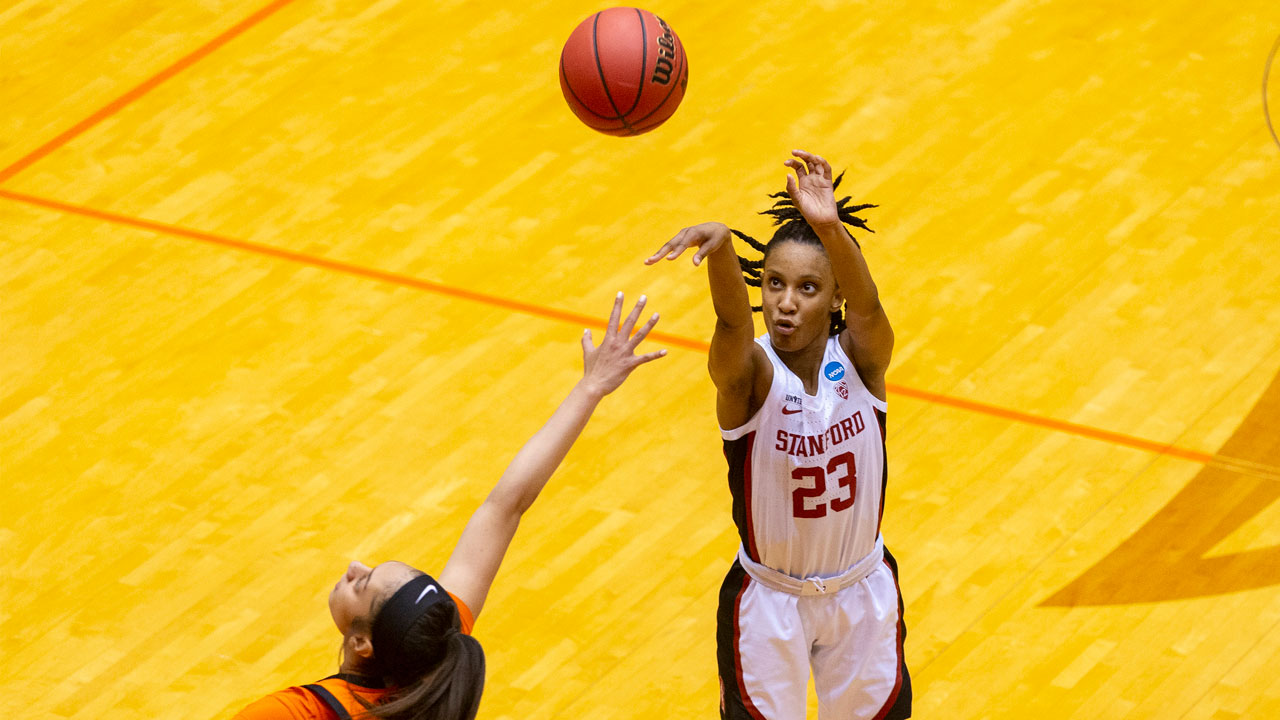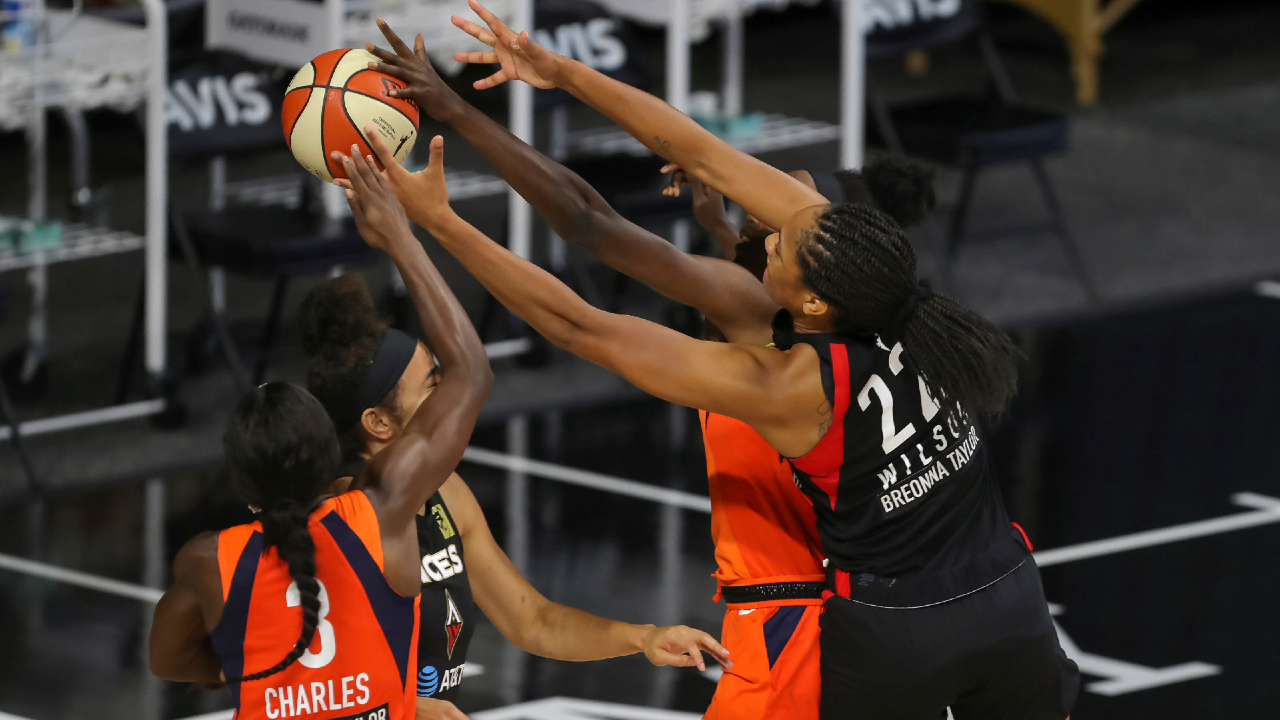In the WNBA, there are only 12 teams with 12 roster spots. With over 60 players on protected contracts, and not every team available to give out 12 spots due to their salary cap, the reality is that less than 10 draftees may make WNBA rosters this year.
Not even every player drafted in the first round may make a team, which poses the argument of just how hard it is to make it in women’s basketball. In a year of the NCAA showcasing unknown talent, the WNBA increasing its viewership, and an Olympic Games and FIBA AmeriCup both happening this summer, the cost of playing is higher than ever.
“Going in the second round, I was the only pick between 18 and 36 that actually made a final roster. It showed me that I was right where I needed to be — they could have picked up any player, any veteran, any other rookie, without a training camp or a formal tryout,” said Kaila Charles, the Connecticut Sun guard who was drafted 23rd overall in 2020.
When called upon, Charles proved why she was the only one in the second half of the draft to make a roster, with her seventh-seeded Sun taking the regular season champion Las Vegas Aces to five games in the playoff semi-finals despite the team dealing with injury.
But even for those on the title-winning Seattle Storm, it’s all too real that there’s no time to celebrate their successes, because the timeline for reporting to EuroLeague camps and other overseas teams happens just days after the end of the WNBA Finals.

Players risk injury and lack recovery time due to the nature of making the bulk of their money overseas. Though there are positives, like travelling the world and playing basketball for a living, there are also a lot of bumps in the road for women to be able to have a sustainable career in basketball.
“We’re competing all year round — it’s a lot of stress on our bodies. This is my first year going overseas and it’s not like here, we didn’t have as much equipment in terms of recovery, weights to maintain. It was kind of tough, we’re going everyday almost. I was playing 40 minutes a night, two games a week,” Charles said.
For 2021 national champion Stanford Cardinal senior Kiana Williams, basketball was always a part of life, but never the only part. Her reasoning for choosing Stanford wasn’t just to play under the winningest coach in women’s DI history, Tara VanDerveer, but to get an education, too.
The WNBA’s new collective bargaining agreement states that women must stay in the NCAA at least three years before being draft eligible — while for men, they can either enter the G League out of high school, or only have to stay in college one year. Many argue that a college degree is worth more than playing semi-professionally, but for women, an amateur league isn’t even an option.
“You get drafted on Thursday, and you have to report to your city on Sunday, so I’m trying to balance between recovering from the season and working on my next journey, trying to stay sharp and make sure I’m in the best shape possible to make a team, ” said Williams.
The competitive nature of NCAA basketball has also seen the transfer portal being used now more than ever as players who lack playing time, even as juniors, feel it may hurt their draft stock, and landing anywhere below the first round is a risk they don’t want to take.
[relatedlinks]
Even after winning a national title, due to the growing women’s basketball talent but the fact that there’s little room to play domestically, players are doing everything they can to put their game on notice to potential WNBA teams.
“It’s super competitive — it’s unfortunate that people who get cut from the WNBA have to go play overseas. I feel like an expansion is in the works and people are going to benefit from that,” Williams said.
Many players, including those in the WNBA themselves, are calling for an expansion of the league from 12 teams, especially when players like Diana Taurasi and Sue Bird are still able to play at an elite level at age 40, and are yet to announce any retirement plans.
With loaded draft classes including the likes of Aaliyah Boston, Zia Cooke and Haley Jones headlining 2023, while Paige Bueckers, Caitlin Clark, Aaliyah Edwards and Hailey Van Lith are set to graduate in 2024, the need for opportunity in the league is evident.
“I think that every year it’s important that we remind people how hard it is to make a WNBA roster — the women who do, and the women who don’t get drafted might go overseas and play their way into a roster spot in the future, but I don’t think we can overstate how difficult it is,” said former WNBA player and women’s basketball analyst Rebecca Lobo.
“Would that be easier if there was an expansion? Absolutely, and I certainly hope that there is an expansion on the horizon… I certainly think the depths of talent could support an additional two teams in the very near future.”






COMMENTS
When submitting content, please abide by our submission guidelines, and avoid posting profanity, personal attacks or harassment. Should you violate our submissions guidelines, we reserve the right to remove your comments and block your account. Sportsnet reserves the right to close a story’s comment section at any time.